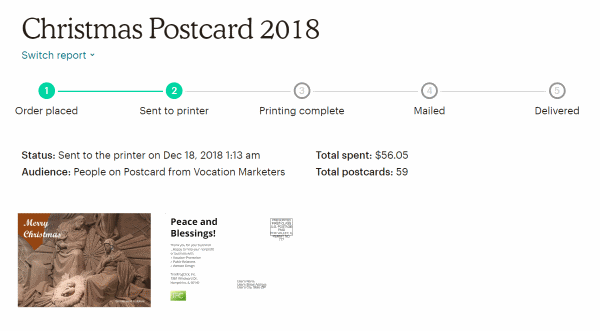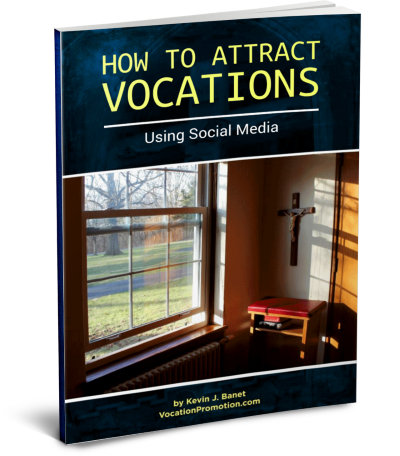When the internet was introduced, a lot of religious communities jumped on the bandwagon with email newsletters.
Email was quick and cost hardly a penny. Many in the business world dumped their old “dead-tree technology” of printed newsletters. Out with the old, in with the new.
Hold on.
There’s been new attention given to traditional postal mail – and this could help vocations.
Email still works, and it does loads of good. But many marketers today are looking again at printed mailpieces. They realize that printed newsletters, postcards, fund appeal letters and so on, still rank.
In fact, there may be a trend back toward the almost-forgotten mailpiece. According to the US Postal Service, people spend 25 minutes each day reading their direct mail.
And now, Mailchimp, one of the largest email services for small businesses, introduced a postcard mailing service a few months ago. So, if you send enewsletters with their system, just find the street addresses of subscribers and Mailchimp will send out postcards for you.
Below you can see the results of our recent Christmas postcard, using Mailchimp’s service.
With this service, you must provide your own image, either in .jpg or .png format. The back of the postcard has a small amount of space for your personal message and logo, which you can see above.
On the screenshot above, you can see that our campaign of 59 newsletters cost $56.05, which is 95 cents each. This price includes postage, which for postcards is normally 35 cents each. So, for 60 cents, in our case, you get your postcard printed, and you avoid the time-consuming effort of merging addresses and printing the cards on your laser printer, or printing those troublesome labels. To say nothing of making the trip to your printer and post office.
I don’t know about you, but I hate the mail-merge function in MS Word that I’m forced to use sometimes.
The only small catch with Mailchimp’s feature is that you have to upload your street addresses as one field containing the address. That means the street address, city, state, zip and country. This is not too difficult if you can work with Excel’s concatenate feature (See Mailchimp’s how-to for concatenate). I figured it out after fiddling with it for a while.
With Mailchimp’s service, you are also limited to sending postcards only to those who opt in as subscribers, and have not unsubscribed.
Another good feature is that postcard mailings can be triggered by certain events, such as new memberships. That means that any new member can be thanked not only with a welcome email, but with your postcard as well.
Using postcards to announce vocation retreats
Why not use postcards to announce your vocation retreats? These helpful reminders will accompany your emails. It’s good to have more than one marketing channel. Besides, we know that some millennials with our Come & See Vocation Promotion Program hardly read their emails. This is a way to keep in touch with them. If you have street addresses on your email software, you are good to go. If not, send out a special email asking for their addresses.
Want to make a better connection with your vocation prospects or other members using such a postcard feature? Read more about Mailchimp’s postcard service, and then contact us.

